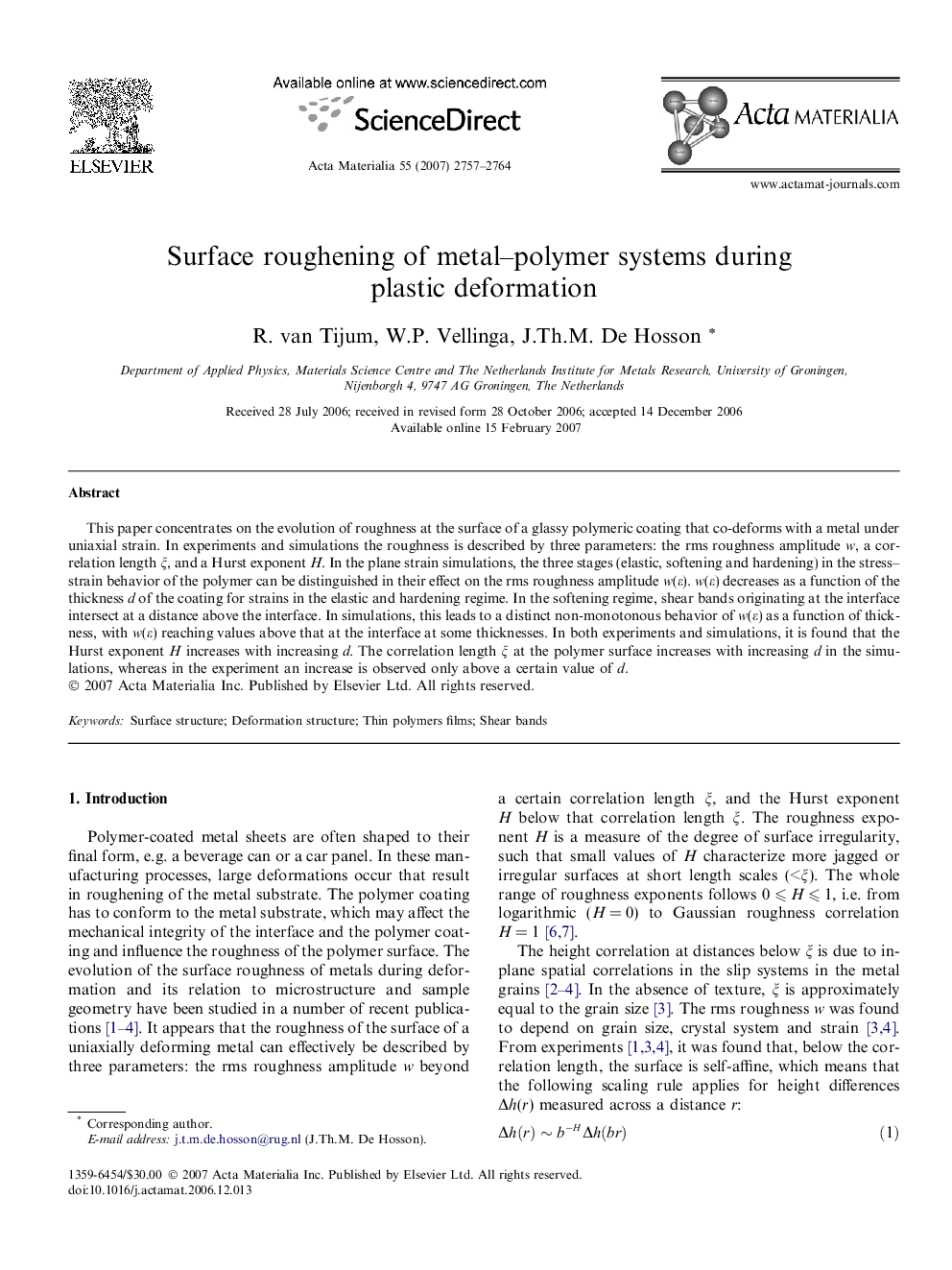| Article ID | Journal | Published Year | Pages | File Type |
|---|---|---|---|---|
| 1450105 | Acta Materialia | 2007 | 8 Pages |
This paper concentrates on the evolution of roughness at the surface of a glassy polymeric coating that co-deforms with a metal under uniaxial strain. In experiments and simulations the roughness is described by three parameters: the rms roughness amplitude w, a correlation length ξ, and a Hurst exponent H. In the plane strain simulations, the three stages (elastic, softening and hardening) in the stress–strain behavior of the polymer can be distinguished in their effect on the rms roughness amplitude w(ε). w(ε) decreases as a function of the thickness d of the coating for strains in the elastic and hardening regime. In the softening regime, shear bands originating at the interface intersect at a distance above the interface. In simulations, this leads to a distinct non-monotonous behavior of w(ε) as a function of thickness, with w(ε) reaching values above that at the interface at some thicknesses. In both experiments and simulations, it is found that the Hurst exponent H increases with increasing d. The correlation length ξ at the polymer surface increases with increasing d in the simulations, whereas in the experiment an increase is observed only above a certain value of d.
